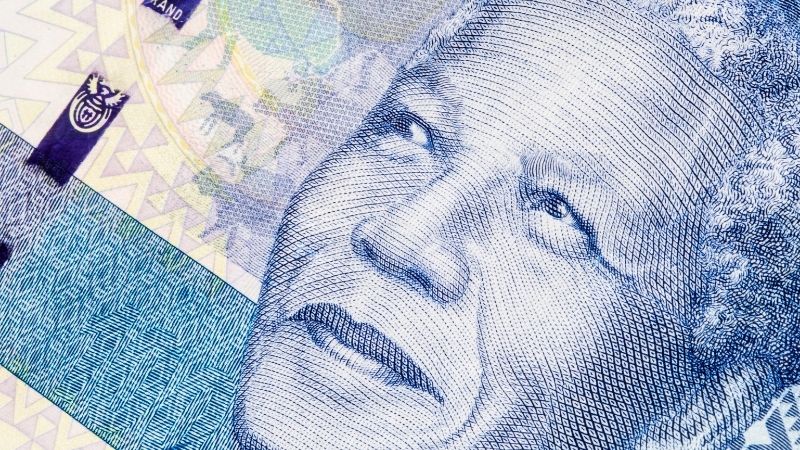Leadership style refers to the leader’s preferred behaviors when working with people to achieve objectives. Experts have identified many leadership styles by observing great leaders.
What is a leadership style?
Leadership style refers to the leader’s approach to providing strategic direction, executing strategies, implementing policies, developing other leaders, and motivating employees. A person’s leadership style may also impact employee performance and decision-making.
This naming of a set of behaviors is like putting leadership styles in a box, However, labeling may help us understand behaviors. And it is important to understand that leaders may use different leadership styles.
You can find assessments on leadership styles everywhere. People love to know how they are categorized and how effective they could be if they change their leadership styles.
Some people need others to tell them how to call their behaviors. Assessments may help us become aware of how the behaviors are labeled, but it does not necessarily make us better leaders.
This is part of a series on leadership learning. Go to What Leadership Is to see all learning opportunities.
11 Leadership Styles
Of course, most people would like to believe that what they do is democratic leadership. That’s because many authors held this to be the most effective style. I know of managers who tell their people that they are democratic.
Democratic leadership is ideal in an ideal world. Unfortunately, we don’t live in the ideal world. I will tell you more below.
Let me make a short description of each style of leadership.

Democratic Leadership
Democratic leadership works when people see themselves as equals and are willing to contribute.
Are you the kind of leader who listens to people? Do you get their opinions first before you make decisions? Do you consider the situation of all stakeholders? If you answer in the affirmative, then people will say that you have a democratic style.
Often, people tell you that this is the most effective style. In democratic leadership, you make people participate in decision-making. You want them to take ownership of their results.
Imagine having a team of people where everyone looks forward to creating and adding value. They share the burden of solving problems with you. Each member has a sense of accountability. You weigh all options. You welcome debate and differences in opinions.
Does this sound like Let Hundred Flowers Bloom? Mao Zedong’s idea sounds very democratic for a communist.
This describes how democratic leadership works.
But, then, you rarely find this kind of team.
I once observed a meeting of students. The participants were officers of various student organizations. The meeting was noisy. Everyone had something to say, but nobody wanted to listen. Except for Roy who said he wanted to listen to everyone.

Autocratic Leadership
The autocratic leadership style refers to the approach where all decisions emanate from one person. They seldom listen to the opinions of others. An autocrat thinks that he is a genius surrounded by a thousand idiots.
It is easy to say that most people do not like autocratic leaders. That’s because an autocratic leader is an authoritarian. He seldom solicits people’s opinions and he makes all decisions.
This is why very few people will say that they have an autocratic leadership style.
But those who cannot calm the boisterous crowd envy the power of an authoritarian. They wished they can advance their good cause without having to consult the naysayers and simpletons in their midst.
It was said that Duterte has an autocratic leadership style. He denies it, of course. He said that he listened to people. But some said that Duterte listened only to those who agree with his ideas. I have no interaction with the President. But this description is autocratic leadership.
This leadership works if you are leading people who worship you. They believe that you know everything you say. And even if you make ridiculous claims, some followers will find a way to spin your words and make them look good.
Mega cult pastors usually employ an autocratic leadership style. They claim that their rules come from God. Ask Pastor Quiboloy.
Autocratic leadership is not necessarily an ineffective style. You need it in times of war. Yes, there will be circumstances when you need to consult others. But if you were a general on the battlefield, you do not have to get the approval of everyone. And at times, you may choose not to listen even to your king.
One of my teachers in Grade 6 believed that all powers emanate from her. She asks questions we need to answer at once. We were not allowed to speak unless we are called.

Laissez-Faire Leadership
It sounds like the leader is lazy, right?
The leader believes that people can make decisions on their own. He allows them to work without much supervision. He said he trusts that you will do the right thing.
Often, people say that this kind of boss does not care. People do not trust him. They do not initiate anything to avoid blame.
In an ideal world, laissez-faire leadership sounds like one who has a titular title and believes that everything will be okay.
I know of executives who owned many companies. He is often almost always present to some companies, but often absent in others.
The absentee boss says you can take of yourself. There are times when this is true. The boss does not have to be present all the time. You do not even have to consult him. Informing him of your progress is enough. People who can solve problems on their own do not need him.
The lazy leader isn’t lazy at all. He happened to pick the right people. But picking the “right” people takes time and effort. One has to be a hands-on leader first.

Strategic Leadership
Strategic leadership sounds serious. The word strategic paints a picture of a leader who pays attention to results. That kind of leader is not concerned about many things, but only about the few things that make an impact in your organization.
We need strategic leaders in every barangay.
He holds a map and he knows the details.
The strategic leader is sometimes democratic, sometimes authoritarian. He understands the importance of listening to people as well as taking action against unpopular opinions.
We seldom find a strategic leader.
In the government, we often get transactional leaders, who say they are democratic and transformational but fancy themselves as tyrants.
In times of crisis, like the pandemic, a strategic leader will make the most of available resources. He ensures services are delivered efficiently and effectively. And he prepares for the future.

Transformational Leadership
A transformational leader brings out the best in you. They declare it their mission for people to reach their fullest potential.
A transformational leader inspires you to have the courage to create and innovate. They want you to challenge the status quo so you can create a better world.
Certainly, most people want this leadership style.
Most teachers believe that their vocation is to mold dreams and bring out the best in every child. You can say the same for pastors, priests, and photographers. Photographers will seldom show you a bad picture, right?
Nelson Mandela, Mahatma Gandhi, Cory Aquino, and Leni Robredo are transformational leaders. Many of their followers say that these leaders transformed their lives.
You can say the same for Hitler [mfn] Many tyrants succeeded because they presented themselves as transformational leaders. The Cult of Personality – Adolf Hitler’s Transformational Leadership [/mfn] and Saddam. I am not saying that they are, but their followers claimed them to be. You can put Marcos, Estrada, and Duterte in the mix too.
What kind of transformational leader do you want to be?
Read Transformational Leadership and find out why some leaders drive change.
Transactional Leadership
Transactional leaders are those who think that leadership is just a job function. Nothing is personal. They’ll do something for you because that’s part of the job. Yes, something like buying candies at the sari-sari store.
People do not think they like to be transactional leaders.
But there are times when what people expect from you is to get things done well. They won’t ask you to inspire them. They won’t ask you to consult them. They just want you to ensure that everyone follows the process.
I wonder if transformational leaders are needed when your mission is to land on the moon. Yes, somebody has to inspire citizens to finance the project. But a transactional leader ensures that everything is done on schedule.

Coaching Leadership
The coaching leadership style is used by leaders who invest time in helping followers (employees) improve their abilities and motivations to achieve high performance. Coaching leaders want you to grow in whatever you do. In this sense, a coaching leader is a small brother of a transformational leader.
Coaching leaders use different methods to change human behaviors. Some pay attention to minimizing weaknesses. Others focus on the positives and what works. Coaching leaders want you to improve your performance.
Coaches, mentors, teachers, and trainers have a coaching style of leadership.

Bureaucratic Leadership
The bureaucratic leadership style is often labeled as ineffective. Probably, because many people find it too rigid. They complain about bureaucratic red tape. But bureaucratic red tape can be cured by bureaucrats.
In truth, if there is no bureaucratic leadership, all governments will fail.
A bureaucrat is an expert. Experts, not politicians, must run the government bureaucracy. But in our country, it is typical that politicians insist on making decisions based on political trends.
If a politician is a democratic leader, he will listen to experts. If not, he’ll waste money. A good example is Dolomite Beach at Manila Bay. Bureaucrats wouldn’t recommend it because it was wasteful and not the product of study.
We expect our government officials to use a bureaucratic style because we want them to follow the plan, policies, processes, and systems when they deliver their services. The moment they veer away from the standards, corruption happens.
Bureaucratic leaders can be democratic, transformational, and coaching. We expect them to listen and consider before creating new policies and processes.
In handling people, we expect them to be coaching. In delivering their services, we expect them to be transformative.
What we worry about most of the time is for bureaucratic leaders to think like authoritarian leaders. We also complain when they think of governance as a transaction.
We expect leaders to use different styles.

Situational Leadership
Situational leaders adjust their styles to the development needs of their followers. Teachers and coaches will find this easy to understand.
A teacher is an educational leader. She knows that students learn differently. These days, we talk about multiple intelligences and learning styles. Each student is unique. In a single class, the teacher must design her lessons to cater to every learner.
In the workplace, a situational leader understands that employees respond differently. There is no one-size-fits-all style.
When I described leadership styles 1 to 8, I realized that each is somewhat good for specific situations.
From a helicopter point of view, we can accept that these styles work. Understanding the advantages of each will help you adjust how you lead.
Knowing all eight leadership styles will not necessarily make you a situational leader. We can talk more about situational leadership later.

Adaptive Leadership
We need adaptive leaders during a crisis if we want to thrive. We have seen adaptive leadership in action during the Covid-19 pandemic. Adaptive leaders look into the situation, consider ways to solve problems, take inventory of assets, and rally people to focus on the solution.
Situational leadership is a form of adaptive leadership.
Adaptive leaders fully understand that to thrive in a crisis, they cannot do business as usual.
Based on their response to the pandemic, Donald Trump (A new investigation reveals Trump ignored experts on Covid-19 for months) and Rodrigo Duterte (Philippines: Rodrigo Duterte’s Response) are not adaptive leaders. At first, they dismissed the Covid-19 virus as if ignoring the virus would solve the problem.
On the other hand, Jacinda Ardern ( New Zealand’s Prime Minister May Be the Most Effective Leader on the Planet) and Tsai Ing-wen ( Why Taiwan Is Beating COVID-19 – Again) showed that their adaptive leaders thrive.

Servant Leadership
We see a servant leadership style among leaders who dedicate their lives to improving the community they serve. They consider leaders more of a function of service rather than who rules.
Mother Teresa is often seen as a servant leader. Though she can dine with kings and principalities, she dedicated her life to serving those who have less in life.
It is often said that the best political leaders are those who became servant leaders first. That’s because their main objective is the welfare of the people, not the accumulation of wealth and money.
Read: Servant Leader: Leni Robredo
We call government employees public servants. We expect them to have the heart of servant leaders. But becoming an employee of the government does not transform one to become a servant leader.
It is likely for a servant leader to be a transformational leader too. The difference between the two is the goal. Transformational leaders pay more attention to change. Servant leaders value what’s best for the people today. Both are trying to change the world.
Read Servant Leadership: Leading by Helping Others Win
Can leadership style change?
Your values, skills, and experiences influence your leadership style. Leaders change behaviors based on situations because they want to survive and thrive. Leadership styles change over time.
I knew a girl who refused to lead. That was because she was afraid to speak in front of people.
Then one day, in a public speaking course that I offered, she discovered her superpower. She has a knack for storytelling; people listened to her. The experience changed her beliefs and values. From then on, she accepted leadership opportunities and used the storytelling skills she never knew she had.
One CEO said that her leadership styles vary because people are never alike. Her experiences influence how she handle leadership challenges. But new challenges are never exactly like the last ones.
I encourage you to read books on leadership too. Becoming more aware of leadership techniques and tools will help you use the best leadership style for you.
During the pandemic, we have seen how many politicians played know-it-alls. They failed because they did not want to listen. You must have heard of the leadership principle that good leaders are good followers. These politicians failed to listen to people.
Leni Robredo, on the other hand, has shown that consultative leadership works. Even with a meager budget, she was able to inspire Filipinos to come together in the spirit of Bayanihan. She was ready to lead in a crisis.
You can answer a leadership assessment to discover your leadership styles. But do not take these assessments very seriously. No leadership style assessment can define who you are and how you lead based on what you remember. We seldom notice the more significant part of our leadership.
If you want to know what leadership style works, be mindful of what you do, how you feel, and the results of what you do to yourself and others.
Let your results define your leadership style.



